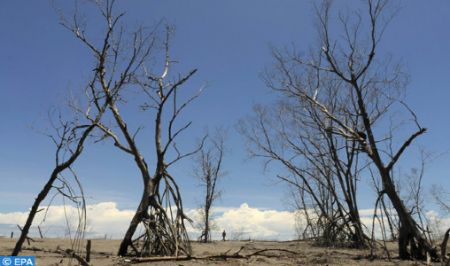US Supreme Court Turns Back Clock on Climate Change
Washington – The conservative majority on the US Supreme Court is manifesting its influence in decisions that are or potentially will change decades of case law interpreting the balance of power in the US. One such decision involves administrative law and an Environmental Protection Agency rule addressing climate change.
W. Virginia v. EPA involved Obama-era rules issued by the Environmental Protection Agency (EPA) in 2015 to address climate change. The rules were subsequently replaced by less aggressive rules during the Trump administration, and then reinstated, but they have never gone into effect.
EPA’s Clean Power Plan (CPP), issued pursuant to the authority of the Clean Air Act, would have required states to more stringently regulate power plant emissions by limiting carbon dioxide emissions from existing coal- and natural-gas-fired power plants within their borders. On June 30, the US Supreme Court held the CPP invalid.
After decades of reliance on the Chevron doctrine under which courts defer to an agency’s expertise in devising administrative rules when the legislative authority is not clear, the Supreme Court in the last eight years or so has rejuvenated the “major questions doctrine.” This doctrine says that there are certain “extraordinary cases” in which a court will not defer to an agency’s interpretation of a statutory provision. Such cases are said to involve an issue of deep economic or political significance or cases where the agency’s regulatory authority would be significantly expanded.
Relying on that doctrine, the court held that the EPA does not have authority under Section 111(d) of the Clean Air Act to devise emissions caps based on the approach it adopted in the Clean Power Plan.
Justices Samuel Alito, Neil Gorsuch, Brett Kavanaugh, and Amy Coney Barrett all joined Chief Justice John Roberts’ opinion. Justices Elena Kagan, Sonia Sotomayor, and Stephen Breyer all dissented.
While resurrecting and applying the “major questions doctrine,” the six conservative justices reject the notion of federal agencies using decisions to change major policies, legal scholars have raised major questions about the doctrine itself.
Justice Kagan highlighted one of its flaws in her dissent: “Whatever else this Court may know about, it does not have a clue about how to address climate change. . . . And let’s say the obvious: The stakes here are high. Yet the Court today prevents congressionally authorized agency action to curb power plants’ carbon dioxide emissions.”
She also criticized the majority’s effective power grab. “The Court appoints itself — instead of Congress or the expert agency — the decision-maker on climate policy. I cannot think of many things more frightening,” she wrote.
The Biden administration’s climate goals include a 50% cut in economy-wide greenhouse gas emissions by 2030 and a fully decarbonized electricity sector by 2035. The Supreme Court’s new limit on executive power, that turns decades of administrative law on its head, will likely hinder reaching those goals.
Abdullah Hasan, a spokesperson for the White House, said, “This is another devastating decision from the Court that aims to take our country backwards. While the Court’s decision risks damaging our ability to keep our air clean and combat climate change, President Biden will not relent in using the authorities that he has under law to protect public health and tackle the climate change crisis.”
West Virginia’s Attorney General Patrick Morrisey said that the decision is a “huge victory against federal overreach and the excesses of the administrative state. This is a huge win for West Virginia, our energy jobs and those who care about maintaining separation of powers in our nation.”
The UN’s Special Envoy for Climate Ambition Michael Bloomberg reacted strongly. “This decision marks the second time in a week that the Supreme Court has turned back the clock to darker days that have dangerous implications for public health. The decision to side with polluters over the public will cost American lives and cause an enormous amount of preventable suffering, with the biggest burden falling on low-income communities and communities of color.”
Because the CPP never went into effect and the Biden administration had indicated it would not apply it in any event, EPA is now considering a new rule. Thus, according to Justice Kagan’s dissenting opinion, there was no practical reason to decide the case, and the majority’s decision is merely an “advisory opinion” on EPA’s not-yet-issued new rule. While normally agency rules are promulgated through notice to the public and comment by interested stakeholders, including the industry that is being regulated, absent new legislation, this Supreme Court pronouncement may well affect the rule before it is even issued.
Senator Ron Wyden (D-Or), the Chair of the Senate Finance Committee, said, “The Republicans on the Supreme Court are not going to allow any meaningful administration efforts to combat climate change. . . . The only way to tackle this problem is through congressional action, which is why it’s so important that Congress pass our clean energy tax credit package.”
Meanwhile, President Biden’s clean energy package, that could provide the requisite legislative mandate demanded by the majority, remains stalled in Congress.













